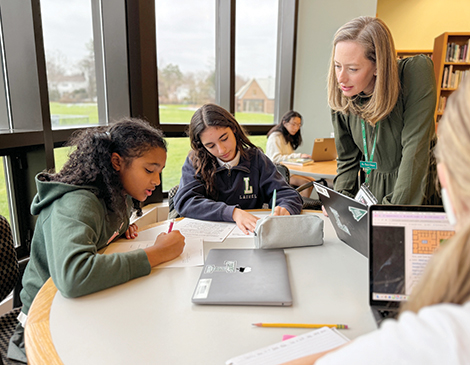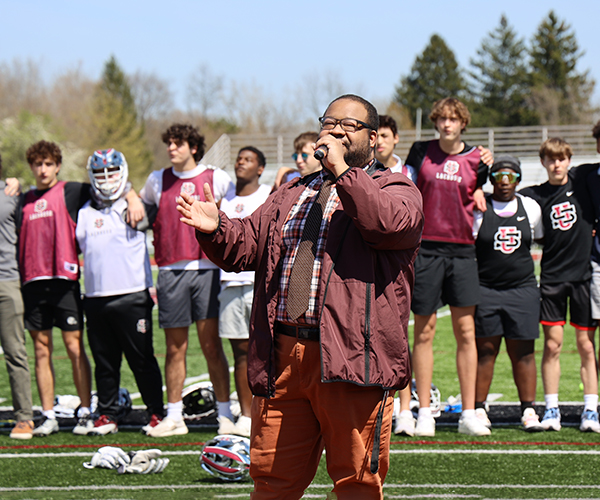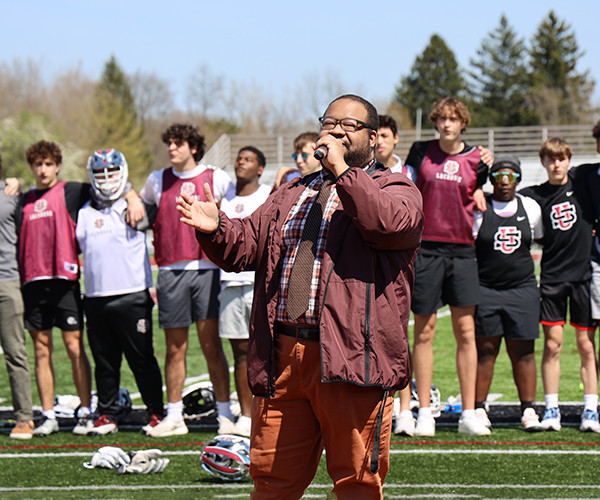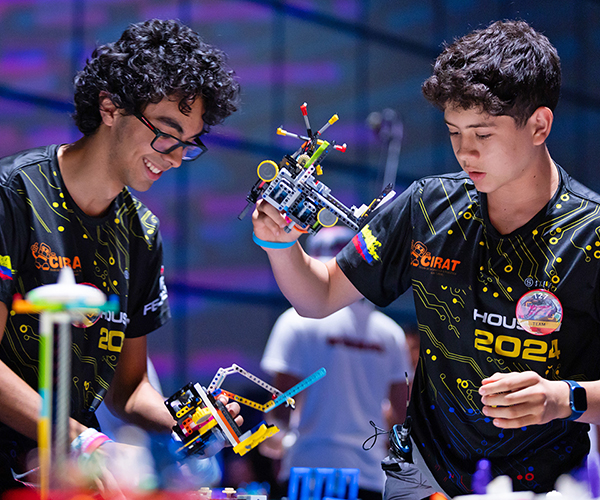After a few months of crash-and-burn pandemic Zoom school, the Kecks decided to go “school shopping” before their daughter’s sixth-grade year to find out how other institutions were managing through abrupt change. Every place was facing a pandemic blitz.
They “pulled the trigger” after considering Laurel School for some time, and she started in-person in the fall 2020. Brian Keck, the father, says following the shutdown and through seventh grade was rough waters.
“She is a good student, but it’s easy for her to get disheartened if she doesn’t see the payoff for having to put in some extra work,” says Keck,
relating that Laurel connected the family to one of its learning strategists, a newly added position to provide a range of academic and organizational supports.
Many schools have added these newfound academic, social and intervention specialists.
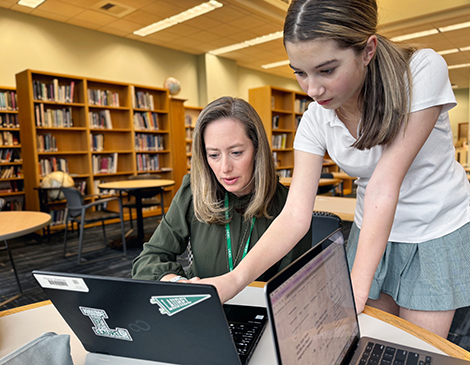
“We’re focused on a growth mindset and changing messages like, ‘This is too hard,’ and, ‘I can’t do that,’ to, ‘I can and will do that,’” says Elana Glasner, middle school learning strategist and math teacher.
Last year, Laurel formed its Learning Strategies department of middle and upper school educators and a school psychologist. They operate out of the HUB center within the library. This recently designated area is where students can access a helping hand. Keck’s daughter became a regular and appreciated how the HUB basically normalized seeking support.
Keck says, “By the time we got to the middle of eighth grade, things really turned around. Now, she has more confidence. The school makes it known that students are supposed to use that time to engage teachers and schedule office hours.”
Schools across Northeast Ohio have been bolstering support for academics, executive functioning, social-
emotional needs and mental health concerns following shuttered pandemic teaching and marked learning lags across the nation.
“While a lot of [the HUB] was implemented after COVID-19, it has shown to bridge gaps whether from hybrid or Zoom learning or other reasons like learning differences, whatever the case may be,” Glasner points out.
Well, thank you, COVID. We mean it.
But, across the board we’re all feeling a sense of COVID fatigue with assigning losses to the pandemic. Do we have to keep talking about it?
Actually, yes.
“Right now as adults, when we hear ‘COVID,’ it’s easy for our eyes to roll because you get so sick of hearing the word, but it is very real, and it is impacting the majority of kids in our school district,” says Bailey Morres, house principal, pre-K and kindergarten, Westlake City School District.
According to a School Pulse Panel study by the National Center for Education Statistics that asked public school administrators to report parent and student concerns expressed during the 2021-22 school year, academic slide was one of many challenges. While 81% said students’
academic needs were not being met, 79% chimed in regarding social, emotional and mental health, with 62% noting isolation from missing out on social activities or events. In April 2022, 69% of public schools reported an increase in students who sought mental health services since the start of the pandemic.
“It’s important that we continue to keep our eyes on what the whole
child needs,” Morres emphasizes. “We need to understand that what they went through is having a profound impact and we need to continue monitoring that and providing additional supports.”
Back to Basics
While every age and stage can relate to forced change and some level of isolation from pandemic learning, some grades were more markedly impacted. Young learners entering kindergarten in 2022 likely did not attend preschool, where formative social skills like turn-taking and sharing are emphasized. They missed early literacy experiences like playing at the park, visiting the zoo, play dates and outings. All this triggers language growth, Morres points out.
Students in grades 1 to 4 during the pandemic shutdown perhaps suffered the most, suggests Westlake Schools Associate Superintendent Amanda Musselman. “Our upper elementary kids had to relearn social norms like how to act in a group,” she says.
Behavioral upsets were more frequent. This included impulsivity, talking out of turn, and even territorialism after months of observing the six-foot distancing rule, Morres says. So, the district rushed in with teacher support so they could better manage a different flavor in classrooms compared to pre-pandemic.
Administration introduced a new Universal Screener for all students to benchmark academics, followed by diagnostics to determine where students fall on the academic continuum and necessary support. The sentiment rings true across learning environments, public and private.
At Westlake, federal funding was filtered into summer programming for any student displaying academic or social need. “We had our eyes on them. We had counselors with us,” Musselman says. “We ran social groups and made sure we continued support for the whole child.”
It’s paying off. Like most districts, math scores dipped during the past couple of years, but comparing 2022 to 2023, grade three mathematics standardized testing indicated an 88% passage rate compared to the state average of 62%.
“We made a gain by 5% from 2022 to 2023,” Musselman says.
The trend follows suit in fifth and sixth grades, which were offered after-school math and reading tutoring. Grade five scores increased by 4% from 2022 to 2023 and grade six math scores elevated by 5%. “We’re seeing it come back,” Musselman says.
Hawken School reports similar age-group struggles. “Those years in first through third grade are so formative in terms of learning basic math and reading, and we’re seeing that impact in current fifth through seventh graders,” says Elyse Wilson, middle school learning specialist and academic support coordinator.
Hawken sixth graders usually start the year in math with pre-algebra. “We had to adjust the curriculum to start with basic computation — so reviewing multiplication, division, subtraction, decimals, which we didn’t have to do in previous years,” Wilson says.
A focus at Hawken and other schools including Shaker Heights’ Boulevard Elementary School has been multimodal teaching with visual, auditory and hands-on lessons that allow kids to connect to concepts in different ways. Boulevard Elementary following the pandemic adopted the Bridges in Mathematics program with its diverse approach to teaching problem solving, says Principal Neal Robinson.
On the literacy side, Robinson says the district added literacy specialists to each pre-K to fourth-grade building. They work in tandem with classroom teachers. Because of this, he reports. “We are seeing gains.”
At Shaker Schools, hosting a family literacy night to support the home-school connection included advising parents to carve just 20 minutes of time to read every day with early learners. Robinson acknowledges that it can be a big ask. “But it’s huge,” he says, relating that simply setting aside time to review the alphabet with a kindergartner can go a long way.
Regarding family support, Shaker Schools added a position to its staff — a trend across districts and independent educational institutions in recognizing a need for increased academic and social interventions.
A Family and Community Engagement liaison addresses families’ challenges ranging from food insecurity to paying rent.
“The job as a FACE liaison is to make sure we are being inclusive so families have a comfort level so if there is a support they need, they will trust us and reach out so we can meet them where they are,” Robinson says. “We have found this has been a real benefit, and it also helps improve mental health in students.”
Big feels
Mornings at Boulevard Elementary School begin with a “meeting” where students make eye contact with peers and greet each other before a social-
emotional lesson such as how to act on a field trip or how to agreeably disagree with a peer. It’s part of the Caring School Community curriculum Shaker Schools implemented following the pandemic. The district had been planning to expand the program beyond the elementary school, recognizing a social lag across the board.
“It has a lot to do with the rise of using devices all the time and less interacting with other people,” Robinson says, relating that the pandemic exacerbated mounting life skills deficits, the basics “we used to take for granted.”
Jason Friedman, Ph.D., school psychologist and leader in socio-
emotional learning and support at Hawken School points to the “undeniable latitude” students experienced with hybrid-learning models during the pandemic to increased overstimulation and lack of focus.
“From an emotional standpoint, the national numbers reporting an increase in
depression, anxiety, isolation and loneliness are consistent as far as an increase in those noted concerns from parents, students and faculty,” Friedman says.
Among a battery of social-emotional support additions including in-house counseling, Hawken School initiates parent coffee talks on topics like setting screen time boundaries, study skills, and warning signs of mental health struggles. “We’re making sure that we are recognizing signs early,” Friedman says.
Owning it
The no-homework policy at Hawken Lower School has indefinitely expired. Not because of academic lag. “Since COVID, we brought homework back to practice the skills of executive functioning, bringing an assignment home, working on it, bring it back,” Wilson says.
Kids need to relearn or develop personal responsibility. And they’re graded for it, but first they’re taught.
Wilson emphasizes how best practices for learning differences are effective for every child: “economy of language for directions, showing visual examples,” she explains.
Time management, meeting deadlines and creating study plans have always been expected tasks for middle-
schoolers, along with self-advocacy and outreach for review and support.
Laurel’s HUB is designed to address these skill gaps. For example, Glasner helped an overwhelmed student streamline lessons and notes that were duplicated across platforms: Google Classroom, a handwritten assignment book, folders.
Also, the school hoisted a “no loose papers” challenge in January.
Parents who get the loose, crumpled permission slips jammed in the bottom of book bags understand.
“The goal is to build organizational skills and habits,” Glasner says.
By the way, you can color-code Google Drive folders.
All of these habits contribute to school success and engaging in the content. That’s what Keck saw with his daughter.
In the inclusive way supports are integrated into the school day that emphasize, “Hey, this is what we do to learn better.” The message empowers students to stand up, build skills and close the gap.
All grades and ages can come together on a common ground that COVID made life and school different. But Robinson adds a crucial point.
“Kids are resilient,” he says. “They can bounce back.” And day by day, they are.
For more updates about Cleveland, sign up for our Cleveland Magazine Daily newsletter, delivered to your inbox six times a week.
Cleveland Magazine is also available in print, publishing 12 times a year with immersive features, helpful guides and beautiful photography and design.

